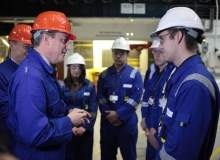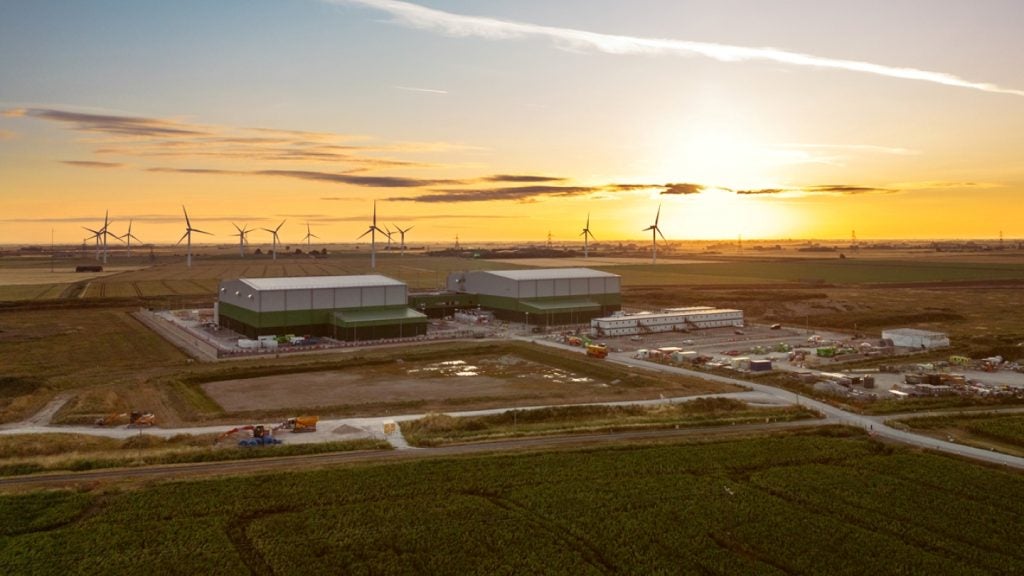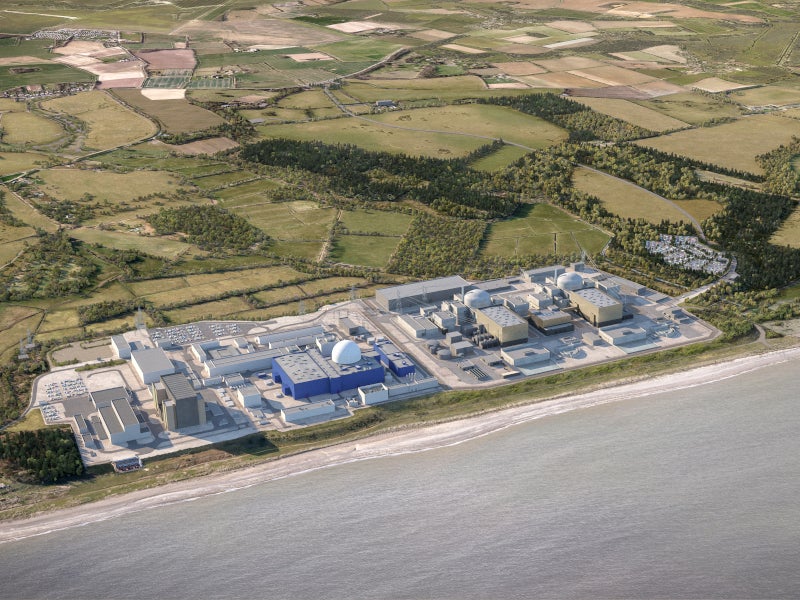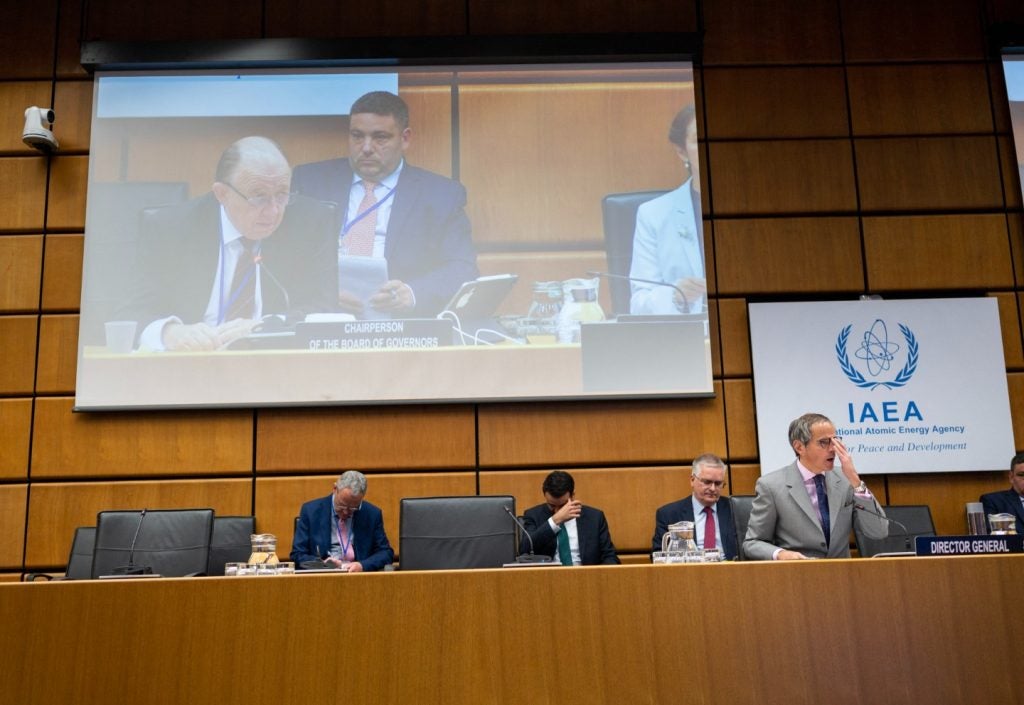

It’s been two decades since the completion of Sizewell B, the UK’s last nuclear power plant to come into operation, and as far as the current British government is concerned, the lack of nuclear investment in the years between then and now represents a critical wasted opportunity.
“For me personally, it is a tragedy that for two decades we gave up on building these nuclear power stations,” said UK Chancellor George Osborne on a recent five-day trade visit to China. “This government is determined to get back into building nuclear power stations. We are going to secure reliable low-carbon energy for the future.”
Hinkley Point C, a massive nuclear plant construction project that has been in the offing since 2008, is the strongest manifestation of the government’s ongoing commitment to new nuclear. The long-term potential of the project is clear – if completed on schedule by 2023, the 3.2GWe plant could provide reliable, low-carbon baseload electricity generation satisfying 7% of the UK’s demand.
But a host of controversies, delays and financing issues plaguing the project in recent years have cast a dark shadow over it, even as a proposed financing deal with China looks set to provide the project’s owner-operator EDF with the green light it needs to move forward. So what are the issues that threaten to turn Hinkley Point C from the white knight of the UK’s new nuclear programme to a white elephant that will hang a millstone around the neck of the country’s public finances?
An imminent deal, but at what cost?
At the time of writing, Hinkley Point C stands on the brink of moving forward, with an official visit to the UK by Chinese President Xi Jinping from 20-23 October this year likely to herald an unprecedented international deal that would see the China General Nuclear Corporation and China National Nuclear Corporation fill the project’s private financing shortfall so that EDF’s British subsidiary EDF Energy and its partners can kickstart the project.
How well do you really know your competitors?
Access the most comprehensive Company Profiles on the market, powered by GlobalData. Save hours of research. Gain competitive edge.

Thank you!
Your download email will arrive shortly
Not ready to buy yet? Download a free sample
We are confident about the unique quality of our Company Profiles. However, we want you to make the most beneficial decision for your business, so we offer a free sample that you can download by submitting the below form
By GlobalDataDespite nuclear energy’s potential, the public remains sceptical.
“My hope is that our Chinese partners can take the right decision and will seize the day. The ball is in their court,” EDF Energy chief executive Vincent de Rivaz told the Financial Times at the beginning of October. “The [UK] government, the chancellor and energy secretary have done all they can. So have we. Hinkley Point, Sizewell and Bradwell are of strategic importance for Britain, France and China and companies in all three countries.”
But what sacrifices have been made by the UK government to reach this stage? Despite the positive spin being put on developments by interested parties in industry and government, aspects of the proposed deal have led many to question the project’s value for money. With a current estimated price tag of £24.5bn (up from an initial estimate of £16bn), it has already been widely noted that Hinkley Point C will cost as much as Crossrail, the 2012 Olympic Games and Heathrow’s new Terminal 2 combined.
Generous terms for Chinese investors
Osborne has noted that the choice to pursue Chinese investment to fund the project frees up British public finances from having to cover the upfront cost. But significant concessions have had to be met to attract this international investment. Under the government’s Contract for Difference, the strike price for the electricity that Hinkley Point C will eventually produce has been set at £92.50 per MWh, around double the current wholesale price, and locked in for 35 years.
While the strike price suggests the British public will be paying back the initial investment in the form of higher energy bills, EDF and other champions of the project have argued that energy prices will be a much closer match with Hinkley’s strike price by the time the plant goes online in the mid-2020s.
Nevertheless, government guarantees extended to the project – £2bn of which were announced by Osborne in Beijing last month – mean that taxpayers are also reportedly now on the hook for around two thirds of the total project cost. With the vast majority of investors put off by the risks associated with the project, critics of the scheme have argued that desperation rather than long-term planning has driven the generous terms delivered to China by the UK.
“The Chinese have Osborne over a barrel,” reads a September editorial by the Observer business agenda. “One wonders what other incentives have been offered to avoid a humiliating U-turn on Hinkley. The final deal, assuming it is agreed, should be published in full: and parliament should comb every line.”
EPR woes: lessons from Flamanville and Olkiluoto
Beyond the financial controversies afflicting Hinkley Point C, the technical prospects of the project have been called into question. The project will use the French-developed third-generation European Pressurised Reactor (EPR) as its basis. The two European EPR projects currently under construction – at Flamanville in France and on Olkiluoto Island in Finland – have not proven to be good advertisements for the technology or the projects using it.
Both projects have suffered horrendous delays and cost overruns – the scale and complexity of the EPR design has necessitated huge project teams of up to 5,000 on site at one time in the case of Olkiluoto. Both projects have seen their cost increase several times over and completion estimates have been pushed back to 2018 from their original finish dates of 2009 (Olkiluoto) and 2012 (Flamanville).
Indian Prime Minister Narendra Modi is on a mission to ramp up the country’s nuclear energy capacity.
A structural deficiency identified in the Flamanville EPR’s steel reactor vessel last year casts further doubt on the technology at the heart of the Hinkley project. The safety issue is expected to prompt a demand from the French nuclear safety regulator ASN for another round of safety testing, which will further push back the project and, if a full reactor vessel replacement is required, could spell the end of the Flamanville plant and the EPR’s international credibility – another risk for investors to consider.
Of course, these technology concerns have a decisive bearing on securing financing, and are likely to have directly contributed to the investment vacuum that has surrounded Hinkley Point C, as even EDF’s CEO Jean-Bernard Levy admitted in an interview with French financial newspaper Les Échos in September.
“For third parties observing the announcements of delays and cost overruns for the EPRs under construction, it is difficult to commit,” he said.
Concerns over Chinese nuclear exports
China is stepping in to fill this vacuum, but the government has yet to convince its critics – or the public at large – that saving Hinkley Point C on the terms laid out so far is a genuinely advantageous arrangement rather than a face-saving overextension.
If a deal comes at the end of October, Osborne and Energy Secretary Amber Rudd will also need to address concerns that a proposal to allow Chinese companies to build and operate a new nuclear plant at Bradwell in Essex, based on a Chinese design – which is reportedly a further inducement for China to invest in Hinkley – will prove too great a challenge to the UK’s nuclear safety and security regime.
Compounding these worries are prominent Chinese physicist He Zuoxiu’s allegations in May that the government is prioritising low costs and speedy development over safety.
“China currently does not have enough experience to make sound judgments on whether there could be accidents,” he said, adding: “Nuclear energy costs are cheap because we lower our standards.”
Nuclear is a suitable – if less flexible – low-carbon alternative to gas for reliable baseload generation to offset the intermittency of renewables like solar and wind, and would provide a much-needed boost to UK energy security. But does Hinkley Point C represent the best way for the country to grow its new nuclear capacity? With uncertain technical credentials, a reactor that has a troubled development history and a financial cost that could come back to haunt taxpayers from both ends of the value chain, the jury is still very much out.
British utility Centrica cast its vote when it accepted a £200m write-off to exit the project in 2013. The UK government, with its generous strike price and guarantees, clearly disagrees. It remains to be seen whether its commitment is a product of prudence or pride.






